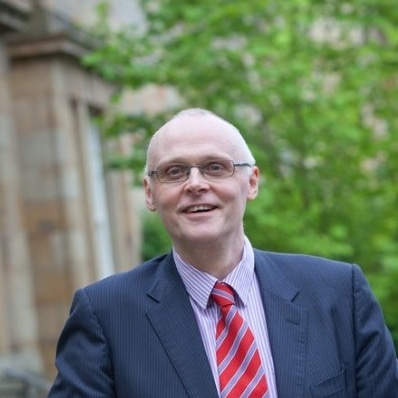There is an understandable focus upon victim survivors of sexual violence and how poorly we often do as a sector in actively encouraging reporting, providing support and investing in prevention.
But maybe we need to talk more about perpetrators.
Organisationally, complaints about students or staff tend to be handled under separate procedures and processes in “Human Resources” departments and “Student Conduct” offices respectively. There are different contracts between universities and staff when compared with students and this is thus reflected in the organisational structures.
The power imbalances are different too. First, there is the academic hierarchy – so in the case of staff on staff sexual violence or harassment the likelihood appears to be that it will be the more senior (more often male) member of staff who is the perpetrator and the junior (more often female) member the victim/survivor. Second, in the case of staff on student sexual violence there is a further power imbalance in the respective roles.
In both of the above sets of circumstances we may wish to reflect upon our organisational values and check their consistency with the handling of such cases.
Balances of power
In the case of staff on staff sexual violence or harassment do we have protections in place for the more junior member of staff? And what additional levels of institutional protection are, in fact, afforded to especially prominent researchers?
What role, if any, does the grant capture of an individual help secure some level of additional organisational protection, or not? In other words if the perpetrator has academic accolades which reflect academically well on the institution too, do we sometimes allow this to have an undue influence in any such cases where a complaint of sexual violence or harassment has been made?
And are there “open secrets” about which individual staff benefit from such levels of additional protection?
With staff on student sexual violence or misconduct all of the above may apply in terms of potential protections in place for perpetrators, and there is the additional dynamic of the power that the member of staff wields over the student.
On the whole UK institutional leaders and governing bodies have chosen not to have contractual arrangements with academic staff which ban having sexual relationships with students. Thus, for example, an 18 year old student at university is not given the same level of protection from sexually predatory staff that an 18 year old school pupil is.
Maybe as academic staff we should focus upon our research and teaching instead. University governing bodies and executive teams have the opportunity to ban staff to student sexual relationships, it’s a choice. UCU could have a role here too working with NUS to lobby for such contractual changes. It’s a choice.
Dismantling the enablers
So, in sum, rather than provide enablers for would be perpetrators we could seek to dismantle such aspects of the academic culture through things like banning sexual relationships between staff and students, and choosing to prioritise student safety and well-being over academic power, prowess and prestige.
Where there are “open secrets” about academic staff known to be abusive of such relationships their managers need support in having discussions with them about the concerns around their conduct.
As members of the academic community that is on us rather than simply to calmly relinquish our own such responsibilities with nebulous assertions that “the university” should do “something”. We need perhaps to ask ourselves what we can do differently too. We surely need to move from a culture of secrecy to one of transparency and openness. This, in and of itself, may also contribute to prevention.
Students
Perpetrators of sexual violence at universities are predominantly male students subjecting female students to such behaviour. Although there is some significant reluctance amongst university leaders to establish prevalence rates of sexual violence, if we were to choose to do such a national survey we could begin to strengthen the knowledge base on the characteristics of perpetrators, which could contribute to the broader sex offender literature too. It would also give us the opportunity to be clearer about intersectional aspects of the prevalence rates.
And it is these intersectional aspects which could also be looked at in relation to the characteristics of reporting parties in addition to perpetrator characteristics. We would also have a baseline of prevalence against which to measure progress in getting the prevalence levels down. Additionally we could look at the prevalence levels in proportion to the reporting levels which may give some additional data on progress and the work still needed to be done.
Open days are a great opportunity for us to inform prospective students of the work we do around student safety and in particular the work we do in relation to the prevention of sexual violence and harassment. Yet despite this many universities seem to fight shy of discussing such matters on open days. In that respect, “open days” are not especially open at all. Yet we need such transparency if we are to aid prevention.
One problem with not talking about our problems with sexual violence is that it contributes to a credibility problem when there is an institutional narrative of “taking sexual violence very seriously” (by not talking about it.) Not talking about student safety on open days does not plausibly sound like an institution that does truly “take sexual violence very seriously’ at all. On the contrary it could be a sign of an institution still ‘in denial”.
From a (prospective) perpetrator perspective hearing that sexual violence and harassment is truly taken very seriously on an open day may well serve to discourage some from perpetrating such behaviour. And this may be especially so if reporting becomes the “new norm” – perpetrators tend to target their victims and part of this may well involve a judgement on the likelihood of being reported and “getting caught”. It is unsurprising, albeit, very disappointing that quite so many universities make the choice not to cover work undertaken on student safety and sexual violence and harassment on “open” days.
Common threads
Neither banning staff from having sex with our students nor talking about our work to reduce sexual violence on campus add greatly to institutional financial costs, and if done well may save upon student well-being and financial costs through contributing to fewer such cases.
What also appears clear is that we need to learn more about perpetrator characteristics so that we may more effectively target our interventions to inform prevention. It is perhaps ironic that a sector that prides ourselves so much on “evidence” is quite so reluctant to acquire the germane prevalence data.
Anyone who cares about EDI issues at universities will perhaps especially understand the need to collect such data in view of the likelihood that some groups will be more or less likely to be subjected to sexual violence and harassment or indeed be perpetrators of it than others. Some groups may report at different rates to others or be more or less likely to be targeted by perpetrators. There would be benefit in knowing more about perpetrator characteristics.
In the cases of both staff and student sexual violence and harassment we also need to ensure that the wider university community is shared information on the sanctions issued to those in breach of such policies. Some universities do this, but many don’t. One consequence of this is the institutional protection of staff and student perpetrators. It may deter some students and staff from reporting because of a sense that individuals never hear that anything gets done if such cases are reported.
Reporting rates may be further increased by the wider dissemination of policies and how to access such services, alongside a key emphasis on cases being determined on the balance of probability rather than the criminal standard of evidence of beyond reasonable doubt.
Where next?
Given that as a sector we have quite so spectacularly failed to sufficiently address our very significant problem with sexual violence we must surely anticipate a firming up of regulatory requirements around this area. We have been given every chance to get our ‘house in order’ but overwhelmingly the institutional choices made by governing bodies and leadership teams seems to have been to not prioritise this area even when it is not a matter of specific costs or resources.
Our failure is embedded in our academic culture. The academic culture of secrecy protecting perpetrators whether staff or students, has prevailed to date. More rigorous regulation may very well be an important part of the solution, but only a part. As an academic community we need to implement cultural change too, challenging our culture of secrecy.
Maintaining secrecy emboldens perpetrators. Rather than default to blaming a lack of regulation or management we can make the choice to actively lobby for changes and often make them ourselves. The impact of such positive changes would be felt not just at universities, but well beyond too in view of the reach of universities for each new cohort of students – a prize worth fighting for surely?
Stopping Gender-based Violence in Higher Education: Policy, Practice, and Partnerships, edited by Clarissa Humphreys and Graham Towl, is out now from Routledge.














“Maintaining secrecy emboldens perpetrators” a truth on so many levels, be it the use of NDA’s when ‘paying off’ victims, to simply hiding the facts when it involves certain religious minorities sexually predative behaviour and misogyny. And whilst it’s pre-sessional season we also see the local Tongs and Triads scouting for lone recently arrived Chinese girls to ‘befriend’ and later prostitute, though most of those girls very rapidly form small self protection groups, usually against the entitled CCP family empowered Fuerdai/Guanerdai male Chinese students, something that is never discussed in Universities where they are dependent on CCP money, even more so where a Confucius Institute is established..